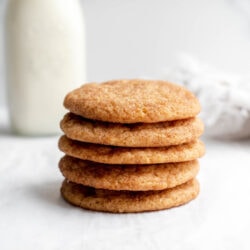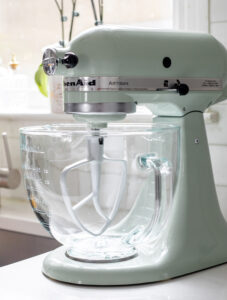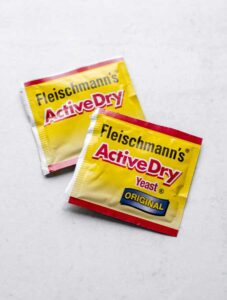Recipes will tell you to 'fold' the lighter ingredients into the heavier ingredients. Here are some tips to help you master the folding technique for cakes!
When baking cakes, a recipe will oftentimes tell you to 'fold' the lighter ingredients into the heavier ingredients. Folding is a very important technique to learn, and it can affect how the cake turns out in the end! With a few tips and tricks, you will become a master at folding in no time.
What is Folding?
In cooking and baking, folding refers to the process of combining a light mixture into a heavier mixture while retaining as much of the air as possible. Usually, you will see recipes that call for folding something like meringue or whipped cream into another mixture.
Folding involves a very specific motion to ensure that you do not deflate the batter. When folding, you want to be careful not to overmix so that you don't let too much air out of the batter.
Oftentimes, cakes that call for folding are made without chemical leaveners (such as baking soda or baking powder), so they get their rise from whipped egg whites. By gently folding the egg whites into the other ingredients, you make sure the cake will rise well in the oven.

How to Fold
When it comes to folding, there is a specific motion that you need to follow. With a bit of practice, it will start to feel second nature to you!
1. Add the light ingredients to the heavy ingredients in several additions.
I usually like to add the light ingredients (meringue, whipped cream, etc.) in thirds to the other mixture. Gently transfer some of the lighter mixture to the other bowl using your spatula.
2. Pass your spatula through the middle of the mixture, across the side, and fold over the top.
Think about it as if you are carving your spatula through the mixture and gently folding the bottom over the top. By doing this, you are incorporating all the ingredients together while trapping air into bubbles in the batter.
3. Rotate the bowl and repeat.
Rotate the bowl and continue repeating this same process. Once you have gone around the entire bowl once, you can scrape the sides to make sure everything is incorporated.
4. Add more of the lighter mixture until everything is combined.
Continue to add more of the lighter mixture and repeat the same process. At the very end, you want to make sure the mixture is no longer streaky. Once all combined, make sure to stop folding so you don't deflate the batter! For a cake, this is the point at which you can transfer the batter to the prepared cake pans.

Folding Tips and Tricks
Here are some of my favorite tips and tricks when it comes to folding:
- Use a large bowl. Folding can get really tricky if you are working with a small bowl. Personally, I find that the KitchenAid bowls are difficult to work with, so I usually transfer the mixture to a wider bowl when possible. Give yourself as much room as you need to properly do the folding motion.
- Use a flexible, silicone spatula. Silicone spatulas are my favorite when it comes to folding. They are typically wide and flexible, allowing you to scrape everything in the bowl and make sure it is all fully incorporated.
- Always add the lighter mixture to the heavier mixture. By adding the lighter ingredients into the heavier ingredients, you are slowly lightening up the whole mixture. If you go the other way around, you can run the risk of deflating the mixture too much.
- Be careful not to overdo it! When folding, it can be tempting to keep mixing forever and ever. When it comes to cakes, I have done this in the past because I wanted to make sure there were no more pockets of flour in the batter. However, if you fold too much, you will inevitably deflate the batter, causing it to not rise properly in the oven. Fold just until combined, then call it quits.





















This is an important baking technique that is not intuitive until you see it done properly once. Thanks for showing the correct method - I am using this to make my wife a peanut butter/cream cheese pie, and the whipped topping needs to be added to the heavier ingredients then poured into a cookie crust. The method you show will keep the entire filling more airy than the last one I made.
It's such an important technique, but it can be tricky to get the hang of it! I'm so glad you found the post useful, Jonathan. And that pie sounds delicious!
How do cake factories fold the meringue into the batter?
Good question, Rojan! I'd assume that a lot of cake factories use machines to do this, but I think the best results come from doing it by hand.